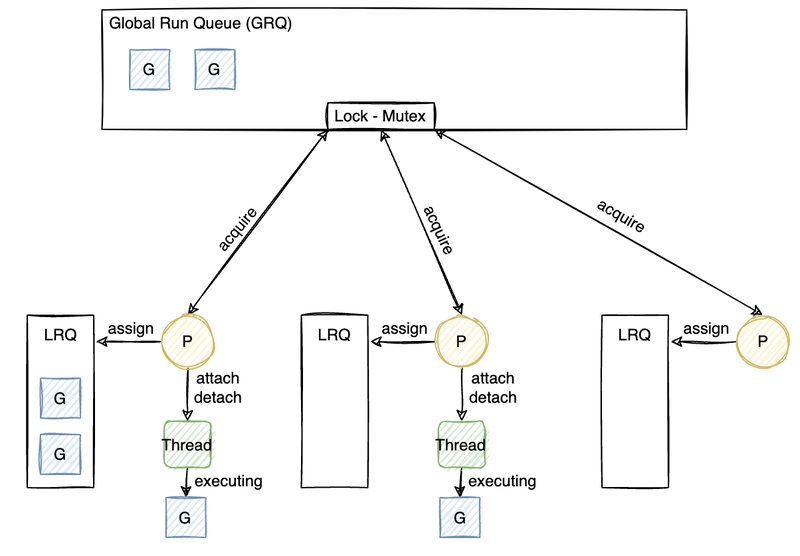Go-Scheduler: Understanding Why Goroutines Are So Lightweight
Goroutines in Go are famously lightweight — much more so than OS threads or traditional language-level threads like those in Java or C++. But what makes goroutines so efficient and scalable? The secret lies in Go’s runtime scheduler. In this blog, we’ll explore the core concepts behind Go’s concurrency model by diving deep into the Go Scheduler — the engine that powers millions of goroutines behind the scenes. We’ll look at how it works, why it’s different from thread-based models, and how features like M:N scheduling, work-stealing, preemption, and network polling all work together to make Go a concurrency powerhouse.

Goroutines in Go are famously lightweight — much more so than OS threads or traditional language-level threads like those in Java or C++. But what makes goroutines so efficient and scalable? The secret lies in Go’s runtime scheduler.
In this blog, we’ll explore the core concepts behind Go’s concurrency model by diving deep into the Go Scheduler — the engine that powers millions of goroutines behind the scenes. We’ll look at how it works, why it’s different from thread-based models, and how features like M:N scheduling, work-stealing, preemption, and network polling all work together to make Go a concurrency powerhouse.







































































































































































![[The AI Show Episode 145]: OpenAI Releases o3 and o4-mini, AI Is Causing “Quiet Layoffs,” Executive Order on Youth AI Education & GPT-4o’s Controversial Update](https://www.marketingaiinstitute.com/hubfs/ep%20145%20cover.png)





























































































































































































































































































































































































![Apple Shares Official Teaser for 'Highest 2 Lowest' Starring Denzel Washington [Video]](https://www.iclarified.com/images/news/97221/97221/97221-640.jpg)

![Under-Display Face ID Coming to iPhone 18 Pro and Pro Max [Rumor]](https://www.iclarified.com/images/news/97215/97215/97215-640.jpg)




































































































